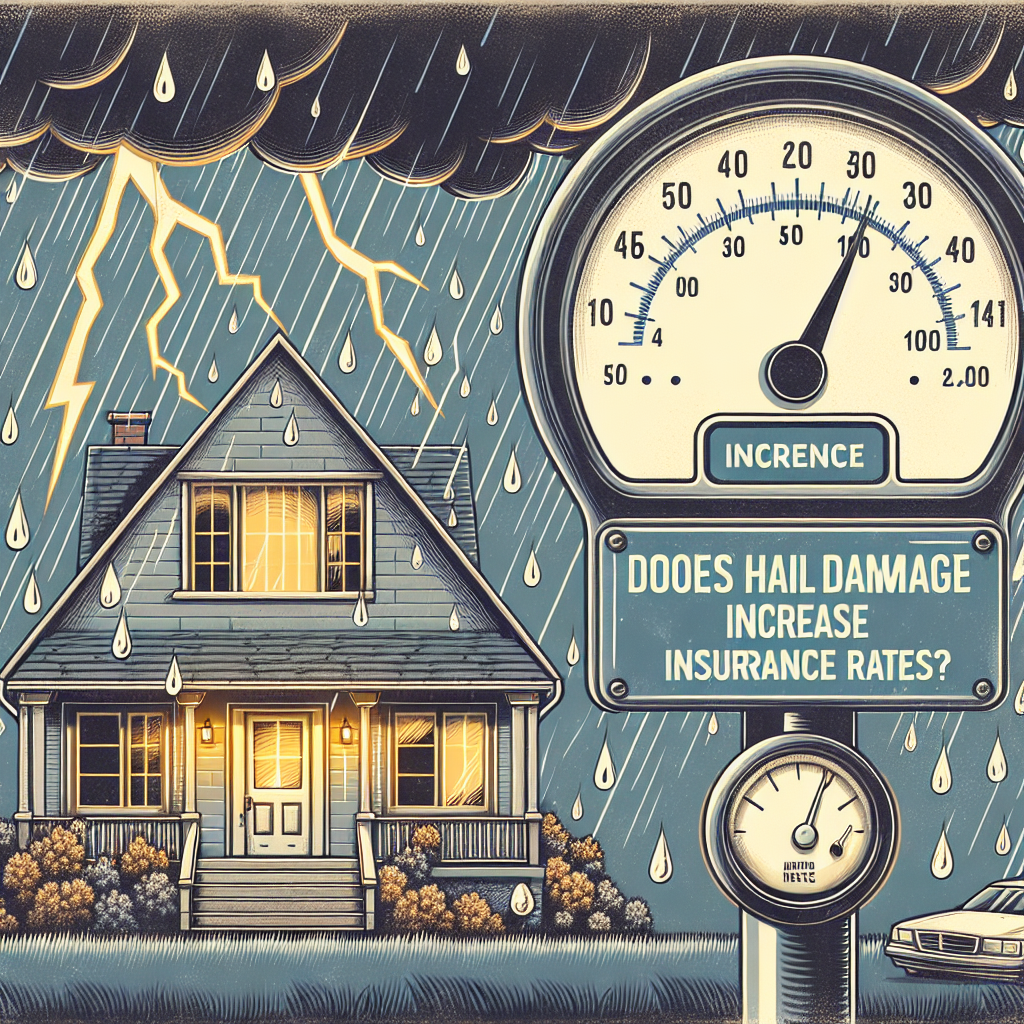Filed under Home Insurance on
Does Hail Damage Claim Increase Home Insurance Rates?

Homeowners constantly juggle numerous responsibilities to keep their properties in top shape, splitting their attention between maintenance, renovations, and insurance matters. While natural disasters like hailstorms are beyond human control, their implications can have a ripple effect on various aspects of homeownership, particularly home insurance. A pressing concern among homeowners is whether filing a hail damage claim will result in increased home insurance rates. This article will delve into this issue, examining the factors that influence insurance premiums and providing practical insights for homeowners navigating the aftermath of a hailstorm.
Understanding Hail Damage and Its Impact
Hailstorms can wreak havoc in a matter of minutes, leaving behind shattered windows, dented roofs, busted garden equipment, and damaged siding. This destructive weather phenomenon is both unpredictable and potent, making it a significant concern for property owners. The financial burden of repairs can be daunting, prompting many to question the repercussions of filing insurance claims for hail damage.
Is Hail Damage Covered by Insurance?
Typically, standard homeowners insurance policies cover damage caused by hail. However, coverage specifics can vary based on the policy's terms, the insurance company’s guidelines, and the geographical region of the insured property. Some areas with higher incidences of hailstorms might have certain exclusions or require additional endorsement for full coverage. It's crucial for homeowners to familiarize themselves with their policy details to avoid surprises when hail strikes.
Do Hail Damage Claims Affect Insurance Rates?
The primary concern for many is whether filing a hail damage claim will result in increased home insurance rates. Here's what you need to know:
Factors Influencing Insurance Premiums
Insurance companies consider numerous factors when determining premiums. While a hail damage claim can be a factor, it’s often not the sole reason for a rate increase. Key factors include:
- Claim Frequency: Frequent claims within a short period can raise a red flag, potentially leading to higher premiums. Insurance providers may label homeowners who file multiple claims in a short span as high-risk clients.
- Claim Severity: The cost and extent of the hail damage claim can influence premium adjustments. Significant claims that require costly repairs might result in premium hikes.
- Location: Homes situated in hail-prone regions might already have higher premiums due to the increased risk. However, local regulations can limit rate hikes post-claim.
- Insurance Provider: Some insurers might automatically raise rates following a claim, while others offer leniency for weather-related incidents. Shopping around may reveal competitors with more favorable terms.
Industry Insights and Trends
Recent industry trends suggest that insurers are becoming more analytical, deriving insights from comprehensive data to assess risk. This advanced approach enables insurance companies to tailor policies and premiums more accurately. However, this also means homeowners in high-risk areas, including those frequently hit by hailstorms, might face initially higher premiums even before any claims are made.
Expert Opinions on Navigating Hail Damage Claims
While a hail damage claim might not guarantee an uptick in home insurance rates, understanding the nuances can empower homeowners to make informed decisions. Industry experts suggest the following strategies:
Regular Home Maintenance
Maintaining the property's integrity can mitigate the impact of hail. Regular roof inspections, gutter cleaning, and window reinforcement can minimize damage, potentially decreasing the severity of claims.
Start with a Damage Assessment
Before leaping to file a claim, assess the damage carefully. Minor dings and dents might be more economical to repair out-of-pocket, avoiding potential increases in premiums. Consulting with a professional damage assessor can provide a clearer picture of the costs involved.
Thoroughly Review Your Insurance Policy
Many homeowners are surprised by policy exclusions and limitations when filing claims. Reviewing your insurance policy carefully ensures you understand what's covered and what’s not. Consider consulting your insurance agent to clarify any ambiguities.
Explore Different Insurers
Shopping for insurance is a wise move following a claim. Different insurers evaluate claims differently, and some may offer competitive rates that align more closely with your needs. Use this opportunity to compare policies and find a provider that values customer loyalty without heavily penalizing claims.
Practical Steps to Take After a Hailstorm
Initiating the right steps post-hailstorm can simplify the claims process and potentially ease the burden on your insurance rates:
- Document the Damage: Capture high-quality photos of the affected areas. This documentation can support your claim and safeguard against exaggerated repairs.
- Reach Out to Professionals: Have a certified inspector or contractor assess the damage. Their expertise can provide an independent evaluation, ensuring fairness when negotiating with insurers.
- Review Your Deductible: Knowing your deductible is essential. For minor damages, the repair cost might not exceed the deductible, making an insurance claim unnecessary.
- File Claims Promptly: If the damage is significant, file your insurance claim as soon as possible. Prompt action helps avoid potential delays in processing and repairs.
- Keep Records of All Correspondence: Maintain a comprehensive record of all communications with the insurer, adjusters, and contractors to ensure clarity and accuracy throughout the process.
Conclusion: Being Prepared and Informed
Ultimately, the question of whether a hail damage claim will increase home insurance rates lacks a one-size-fits-all answer. Each situation is uniquely influenced by a myriad of factors, from claim history to geographical risk assessments. By understanding your policy, maintaining your property, and considering expert advice, you can better navigate the complexities of filing a hail damage claim without unnecessarily stressing over potential rate increases. Stay informed, be proactive, and don't be afraid to shop around for an insurance policy that suits your individual circumstances and offers peace of mind in the face of nature’s unpredictable fury.





